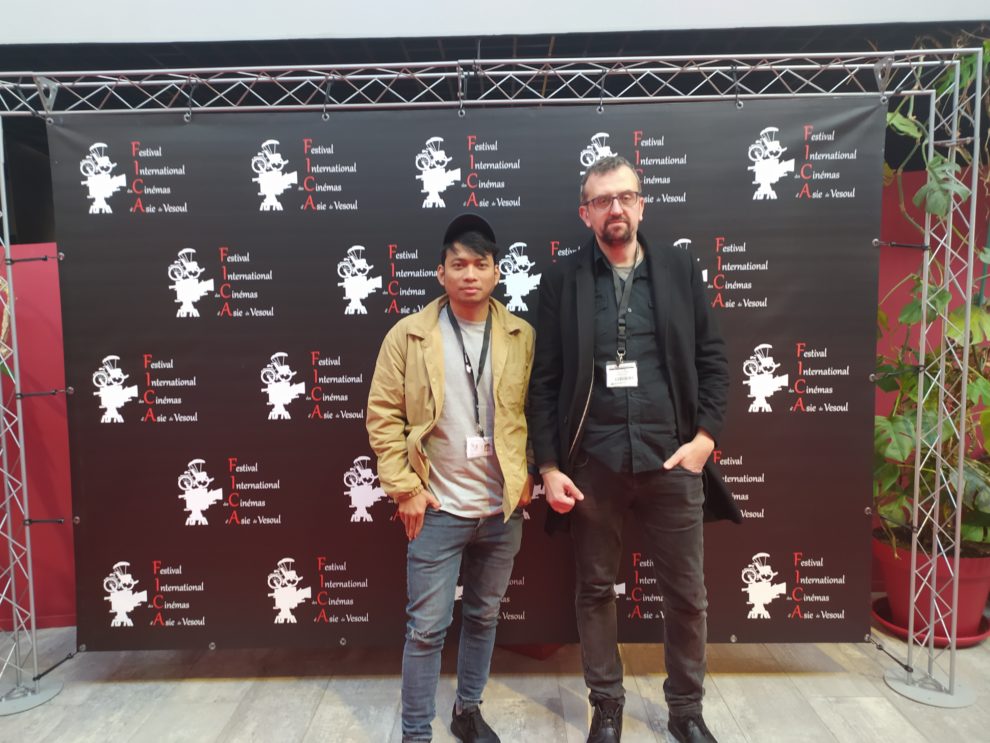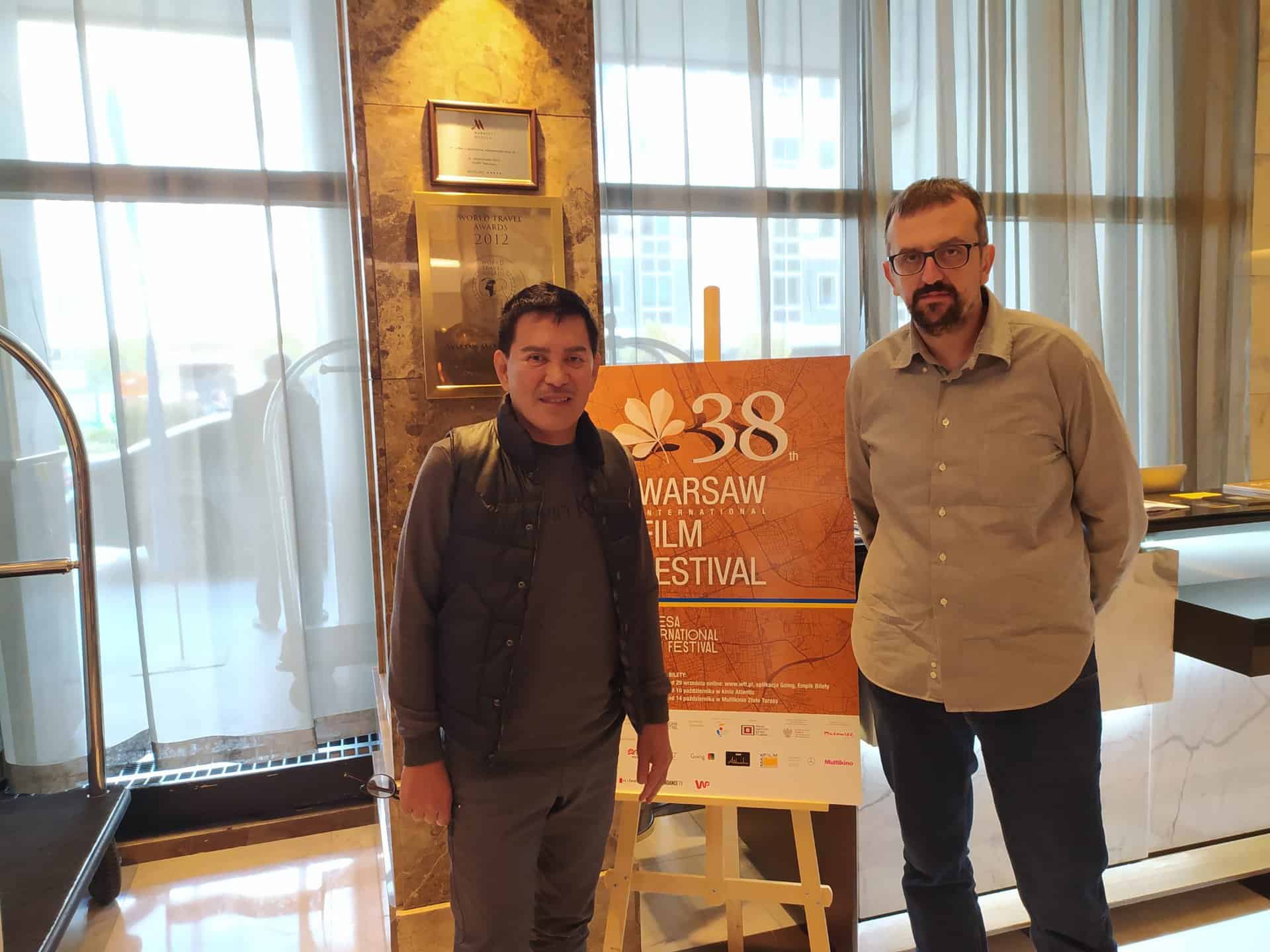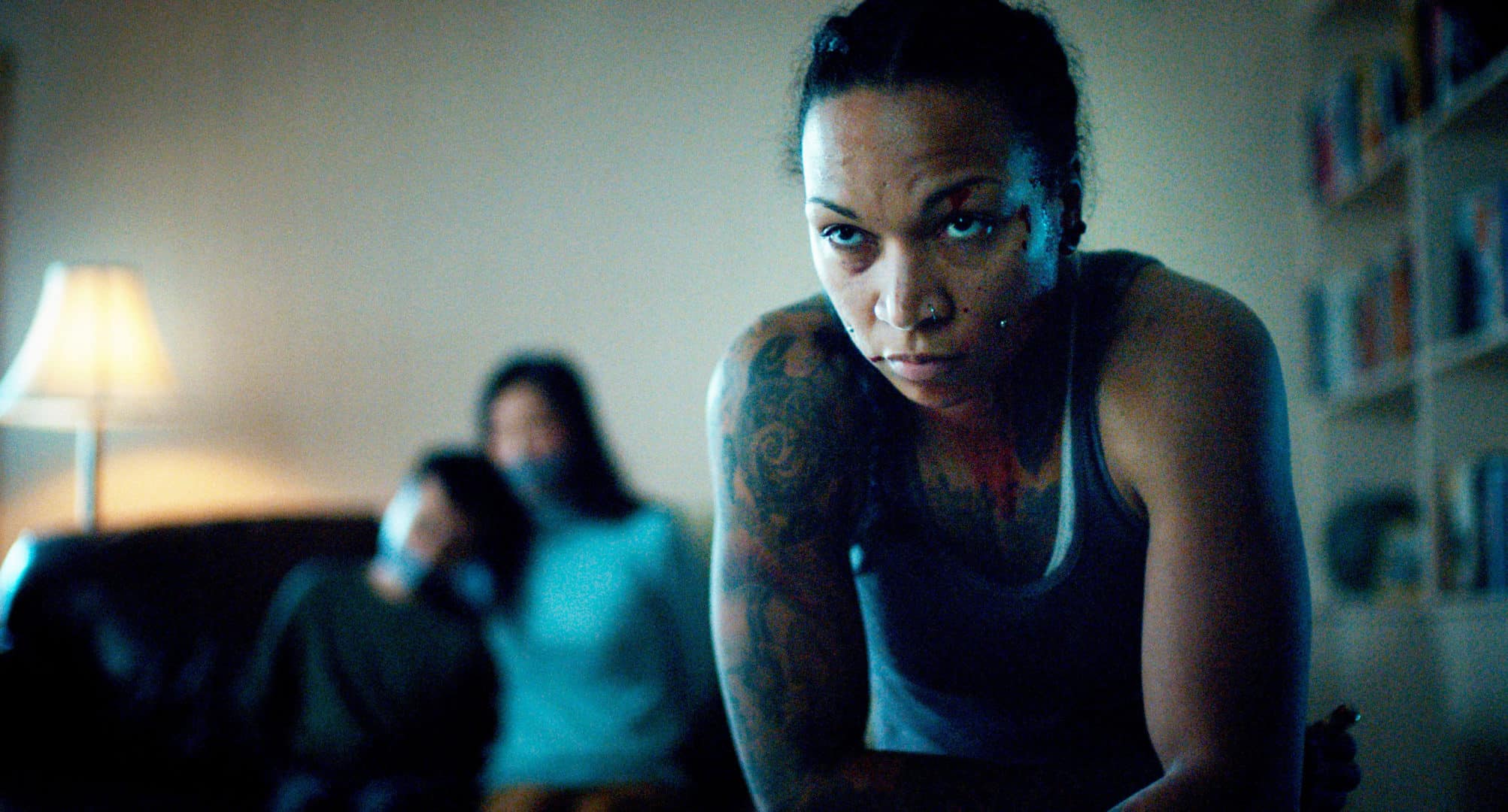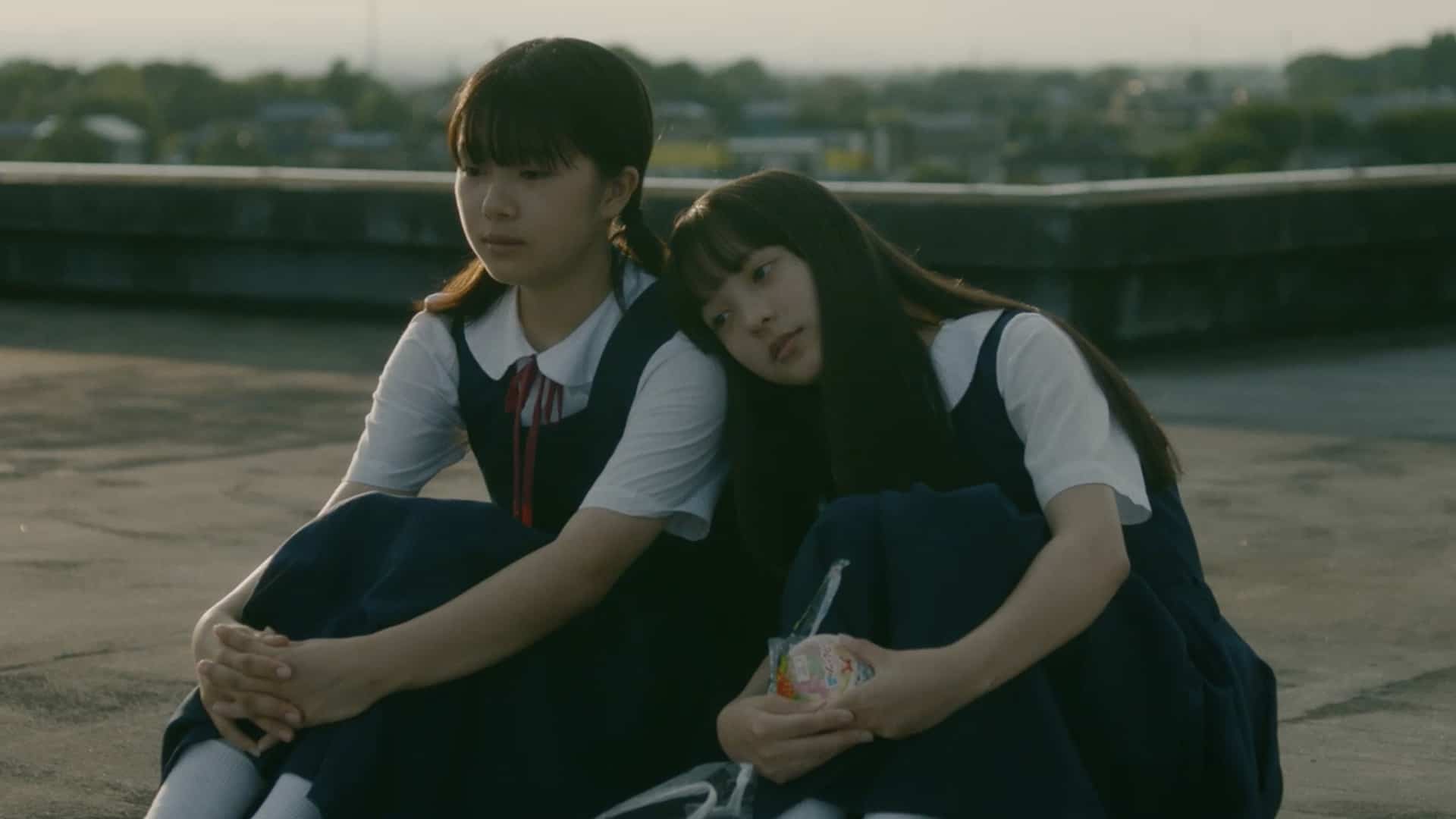Kavich Neang was born in Phnom Penh, Cambodia in 1987. First, he studied next to Rithy Panh before joining the Busan Film Academy in 2013. In 2014, he co-created Anti-Archive with Davy Chou and Steve Chen. After that, Kavich took part of the Cinéfondation residence in Cannes in 2017-18. In 2011, FICA Vesoul presented 3 of his short films, like “Dancing in the Building” and the documentary “Where I Go ?” co-produced with Bophana and Rithy Panh, was presented in Vesoul in 2013. “White Building” is his first feature film.
On the occasion of his presence in FICA Vesoul as President of the Marc Haaz Jury, we speak with him about the White Building and his days living there, having a dancer as a protagonist, Cambodia and the local film industry, superstition, and many other topics.

What is your ‘obsession' with the White Building?
As you know, the White Building is my home, the place where I grew up and have many fond memories of. The documentary I shot before about it was not exactly my intention, because the White Building would be demolished before my feature film, and I shot the doc just because of that, although it did not come from where I expected it to come. The feature was a whole other deal, since I wanted to focus on a character who would be kind of a hero, motivate young people. But in the end, he had to face reality, he could not do anything more than support his parents
How close to your life is what is being portrayed in “White Building”?
Samnang's story is quite similar to mine, although he dances hip hop and I was mostly a traditional dancer. When you are part of a family you always have some responsibility, and sometimes you cannot decide what to do. I think in Cambodian families, the parents want to be with their children as much as possible, but as a young boy, you want to grow up and see other things, so maybe the story is not exactly parallel to me, but to Cambodian youths in general. I hope that, when they see the film, they could feel themselves, that part of the story.
How was the situation during the last days of the White Building?
I felt like it was not real. When I saw my parents packing, I did not feel that was the reality, maybe it was kind of a dream. At least until the moment I realized everyone was leaving and the building was empty. I tried to accept that as a reality. Even during the meeting that we were informed that we had to evacuate, I did not feel that this was reality, because it was so sudden. If they have told us one year before, maybe it would be different, but at one point, they told us that they would be a meeting in one month, and during the meeting they told us we had to leave, it was so sudden.
After a point, the White Building was filled with drug trafficking and prostitution, but you do not portray that part in your film. Why?
Because I wanted to focus more on my family situation; the White Building was not only about drugs, there were also a lot of artists living there. For example, after the Khmer Rouge era, my parents moved in the building, along with many artists, and I wanted to portray that aspect. Slowly, however, there were more and more drugs and prostitution, and since Rithy Panh portrayed the prostitution aspect in “Paper Cannot Wrap Up Embers”, I wanted to focus on something else. Actually that prostitute in the film was my neighbor, I was so young when he shot the film. For the first part of “White Building”, we follow a young guy who is getting out of the building, but the second part is more about the family, so I felt that if I also included these other elements, I would confuse the audience about what kind of story I wanted to tell.
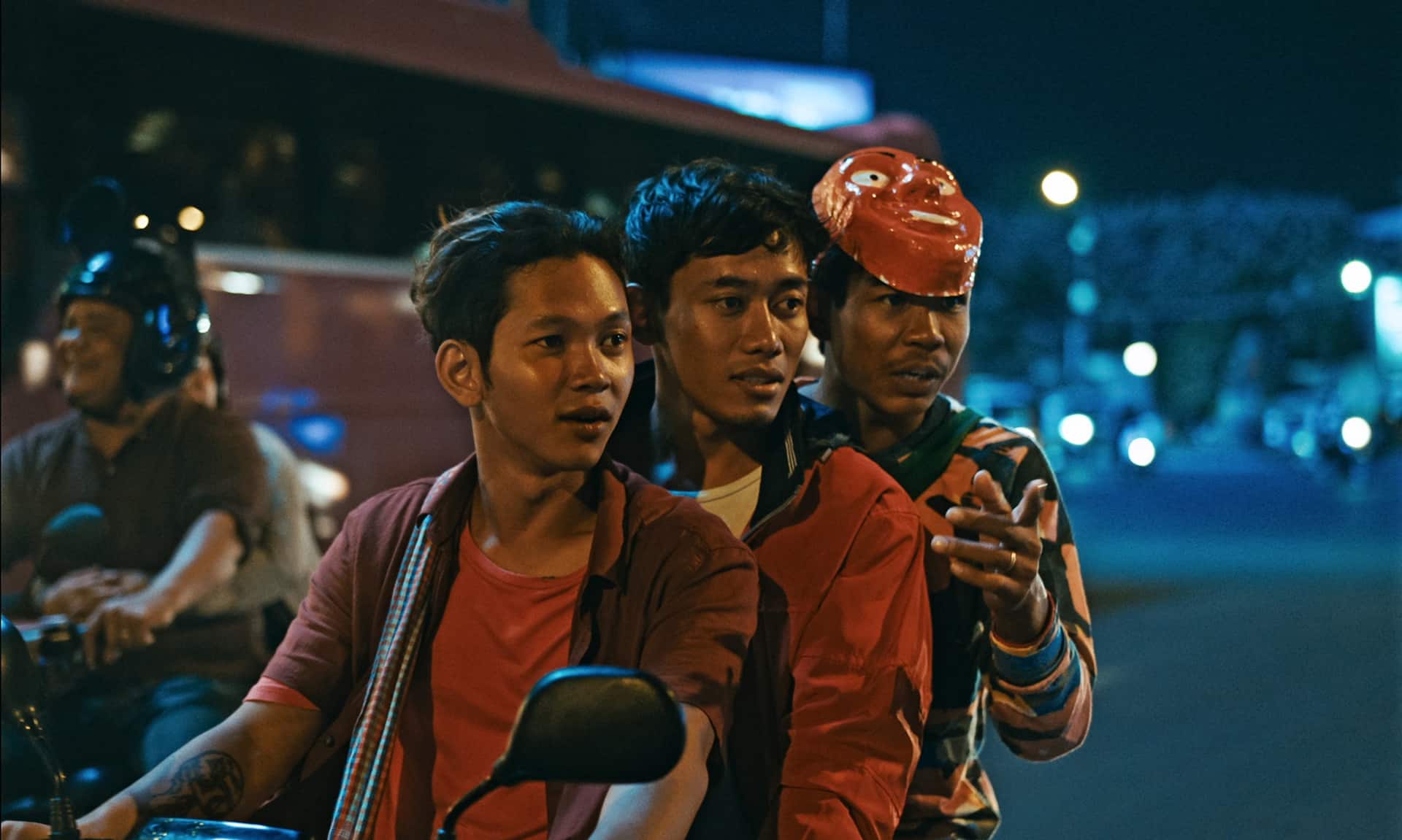
Was it dangerous living there at some point?
Yes, my mother was afraid that I would be influenced by my friends and go smoke drugs and drink, become a pimp… Somehow my mother kept me at home until I told her that I could not stay home for seven days every week. She would then let me out, but still observe what I was doing with the other kids. All of my siblings went to school, but this was not the situation with many of the other kids in the building, and my parents in general had much control on the way we grew up.
Why did you decide to have your protagonist be a hip hop dancer?
I used to dream of being a hip hop dancer but I grew up to be a traditional dancer. I feel that Cambodian society is a bit sleepy in general, people are not really active, people are not really expressive, that is why I thought that presenting a boy dancing would bring a bit more energy. But since society is like that, although the film begins in an energetic way, gradually it falls back to the normal rhythm of life in the country. It was my effort to try and be more active, but maybe in reality it is impossible.
The way Samnang's father is eventually stripped of most of the parts of his life is one of the most impactful aspects of the movie. Can you elaborate on that?
The father was kind of symbolic to the building, he represents the situation inside the building. As he becomes weaker so do the inhabitants become less united, and as his issues become bigger, the building becomes more fragile. He also represents another aspect of Cambodian society, the gap between the previous and the current generation, the fact that older people could not express themselves to someone like Samnang, who represents the youths, even including myself, and particularly our attitude towards such a situation, if we have to depend on our parents, our fathers in this case, or live by ourselves. Samnang was trying to be independent, but in the end he chose to help his father, who wants to focus on helping the community but is too weak to do so on his own. I believe that my generation has stopped trying to express itself, because we live in a setting as the one I described before, and the fact has led us to be somewhat lost.
You chose to show the cutting of the leg in an almost brutally realistic way, in contrast to the general aesthetics of the movie. Why?
For me, having only one leg or one hand is a very brutal and aggressive concept, but at the same time, when you live in the White Building, in a place that you have lived for long, you build relationships, friendships etc, you do not feel alone. When you move to another place however, you lose these connections, and I wanted to explore how this concept would make one feel. I think you feel like they cut off your body, and that is the parallel with what is happening with the father in the film.
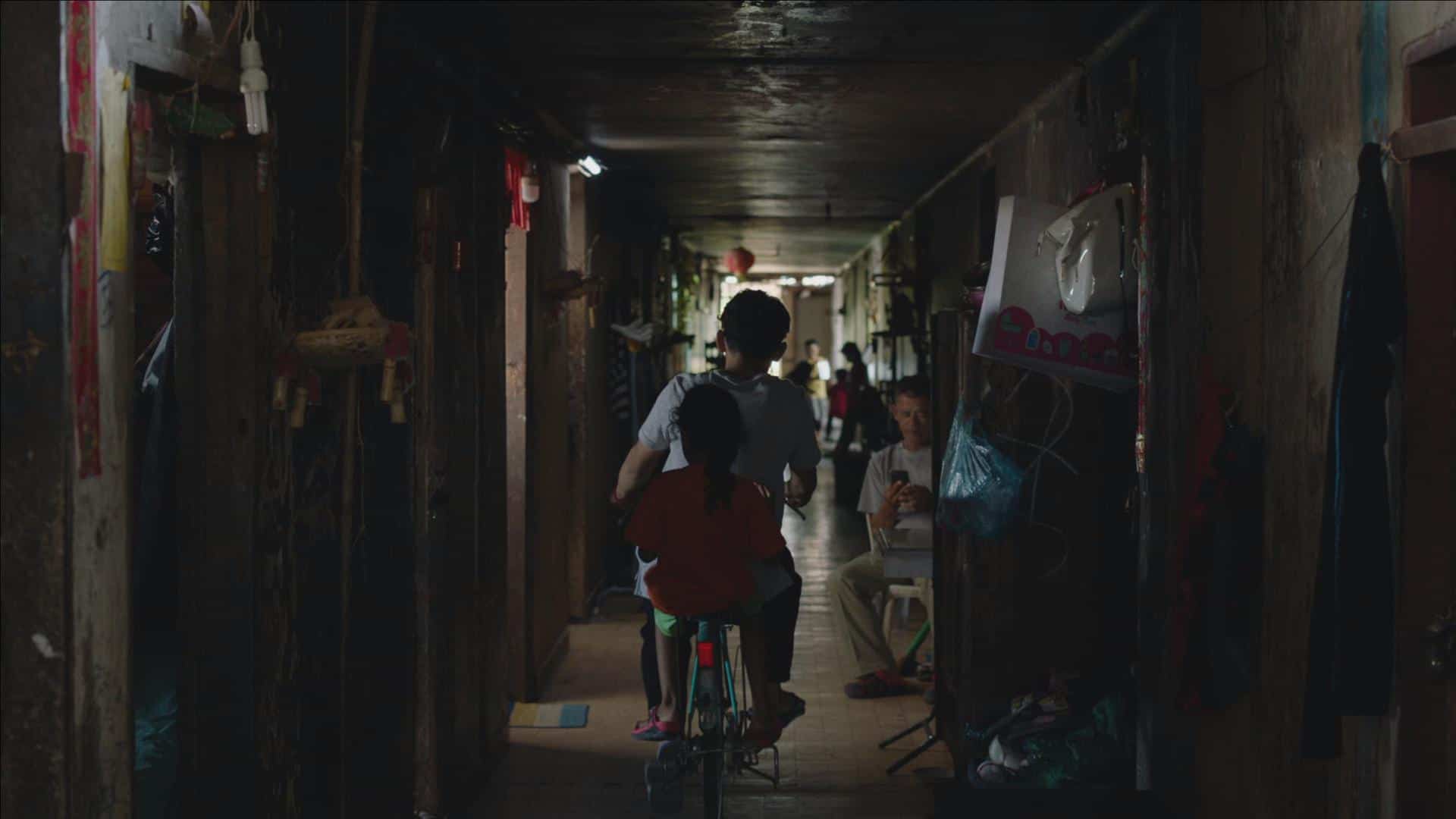
Can you tell me a bit about the first scene, that shows the building quite impressively?
I did not shoot it actually, I went there during the demolishing of the White Building and the drone guy came to document it, and we became friends as we both went repeatedly there. I told him that I am working on a project about the White Building, and one day he told me that I could use his footage. To also explain the meaning of the shot, it actually links to the last shot of the film, with Samnang looking up at the building and thinking, and then if you consider it a circle, you have the first shot, which essentially closes the cycle.
Can you also give us some details about the scene with the two bikes?
It was a very difficult scene. In the beginning, we talked about safety because we did not have money to block the road. We were very afraid of what would happen if any of them got injured, but at the same time, I wanted to capture it as realistically as possible. I thought that they should improvise and I explained to all six of them (all of which are first time actors) about the characters and the whole scene. That there are three boys that want to be with three girls, but the girls are actually playing with them. It was difficult, because I did not have much control but I trusted them and in the end it worked out good.
How was the casting for the movie?
We had an audition for Samnang, but it is difficult to find a professional actor in Cambodia to do this kind of film, because their acting is a bit more polished, more suitable to mainstream movies. So for me, it was more of finding someone that fits the role than someone with experience.
It was really difficult cooperating with the first time actors in the beginning, because they could not understand what I was asking from them. They thought that actors just read the script and follow it, but gradually I explained to them that they have to be themselves, even outside the script on occasion. This is how we built the characters, and slowly, after a week of shooting, they realized that the movie is not about acting but about being yourself.
The father, Hout Sihorn, was a completely different case, since he is also a director and an opera performer, and has his own way of acting. It was a bit polished and “loud” but slowly I explained to him that he should be as a father inside his house, more realistic. It took time, but eventually we understood each other. I was also worried during the big scene, the meeting on the rooftop, which was quite challenging actually, particularly on how we could control the whole crowd. It was tough, but in the end, thanks to my assistant director (Sreylin Meas) I managed to get a result I was happy about.

I felt that there is some sort of accusation towards the mother, for insisting on her superstitious notions. Was that your purpose?
I agree, there is a sort of accusation. In Cambodia, people can be reasonable and intellectual about things but most people, on occasion, also believe in superstition. There is not always a balance, sometimes we are more reasonable, some times more superstitious and I portray that in the movie, when Samnang is talking about his dreams or when the father wants to treat his leg with honey. Just like the father, in Cambodian society, you can be intellectual, but in the end, you also have to embrace superstitious beliefs as part of the religion.
What is the situation with the Cambodian movie industry at the moment?
It is very small. There are many young filmmakers who want to make their films, but we have to face many difficulties. First of all, there is no funding for local filmmakers and cinemas in Cambodia only screen Hollywood films. I feel that we should support each other. Also, a lot of filmmakers have short films but have many difficulties when they try to shoot a feature. Since there is no local funding, you need to have a producer who can understand how international funding works. In my case, I have a production company with Davy Chou, who is Cambodian-French, who produced my film but also understands how international markets work. Of course, he cannot produce for every Cambodian filmmaker, and this is also a problem, the lack of producers with these certain skills. This has led to a lot of filmmakers losing hope, they do not feel that things will get better.
Are you working on anything new?
I have an idea for a feature project, but not a solid one yet. It will focus on family and society


